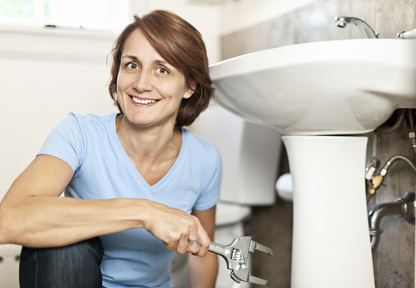Every person may have their own theory about How to Fix a Water Damage Bathroom.

The restroom is extremely at risk for damp accumulation and also prospective water damage as a result of the regular use of water in it. This post provides straightforward assessment techniques to aid discovering water damages risks.
The constant use of water in the bathroom makes it very vulnerable for wet accumulation as well as potential water damages. By examining it regularly, you can minimize water related problems.
The complying with set of examinations is easy to perform as well as should be done as soon as in every 3 months in order to maintain your bathroom healthy and also to prevent potential water problems caused by the tub, the shower, pipe joints as well as plumbing, sinks, cabinets, as well as the commode
Do not overlook executing these inspections as well as be thorough while doing them. Keep in mind that these easy examinations can save you a great deal of cash by offering very early indications for water damage
Sinks and also Cabinets
Sinks and cupboards are revealed to moisture as well as moisture daily as well as are usually overlooked. Examine on a regular basis under the sink and on the counter top over it. Fix any drip in the trap as it might recommend drain issues. Check out the sink, slow-moving draining pipes may suggest an obstructed drain. Replace sink seals if they are split or loosened.
Bathtub and Shower
The shower as well as bath tub call for unique focus and maintenance. Inspect the floor tiles and also change if cracked. Ensure that there is no missing out on cement in between the tiles. Examine as well as change split caulking at joints where the wall surfaces meet the floor or the bathtub. Blocked drains as well as pipelines troubles will certainly prevent the bathtub from drying as well as may suggest severe troubles under the bath tub. Seek advice from a professional instantly to prevent structural damage. Take note of discolorations or soft areas around the bathtub walls as they may indicate an internal leak.
Plumbing
Signs for water damage are hard to spot because many pipes are installed inside the walls.
Pay special attention to flooring and wall surfaces dampness and also discolorations as they might suggest an undetectable plumbing issue. Inspect wetness levels in adjoining rooms as well.
The Commode
The commode is an at risk water junction. Inspect the water lines and search for leakages around the commode seat, in the pipe, as well as under the water storage tank. If you spot any indicators of wetness on the floor around the toilet, look for leakages in the toilet edge as well as tank seals.
Be aware that hanging commode dish deodorants enhances the chances for obstructions.
TIPS TO PREVENT WATER DAMAGE IN THE BATHROOM
The average household uses approximately 80-100 gallons of water per person per day. For a family of 4, that's almost 2,500 gallons of water a week! The largest portion of this consumption comes from bathroom use. Flushing the toilet uses the most water, followed by taking a shower or bath. With that much water running through the home, water damage in the bathroom is bound to happen. Knowing how to spot signs of a water leak is essential to preventing long-term damage. This guide provides you with tips to reduce the impact of water damage on your bathroom.
CAUSES OF BATHROOM WATER DAMAGE
Pipe breaks are the most common cause of water damage we see in our daily jobs. The age of a pipe plays a large role in a pipe break as well as corrosion. Over time, the metal begins to break down, allowing water to escape. Frozen pipe breaks are also a concern in the winter months. Toilet overflows caused by paper products or children flushing inappropriate items. Degraded caulking around the toilet or bathtub can allow water seepage, sometimes behind the fixture, into the subfloor or walls. Condensation forms when the water in a pipe is cooler than the air temperature. Beads of water form on the exterior of the pipes, sometimes so much so that the water begins to drip and pool below. Sink or shower backups created by poor drainage. HOW TO PREVENT WATER DAMAGE IN YOUR BATHROOM
Inspect your toilet supply line for worn or frayed hoses and replace them as needed. Winterize your plumbing to prevent a frozen pipe break. Use vent fans to prevent condensation that can lead to mold growth. Routinely check and replace degraded caulking around your toilet or bathtub. Increase the temperature in your toilet tank and insulate your pipes during the warm summer months to keep condensation from forming. Use child safety locks on the toilets. Flush only toilet paper. "Flushable" wet wipes are actually not good for your plumbing system. Additionally, feminine hygiene products should not be flushed. Prevent water from escaping the tub or shower. Make sure shower curtains are in good condition. Inspect shower doors and replace the seal strip if necessary. Wipe up any water that accumulates on the floor and use bath mats. Water left to sit can cause damage to the tiles and flooring. Refrain from using bath products containing heavy oils to avoid a clogged drain.

I have been very eager about How to Prevent Bathroom Water Damage and I'm hoping you appreciated the blog posting. I beg you set aside a second to distribute this post if you liked it. Bless you for your time. Come back soon.
Visit Our Website